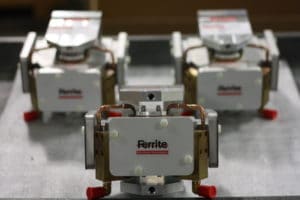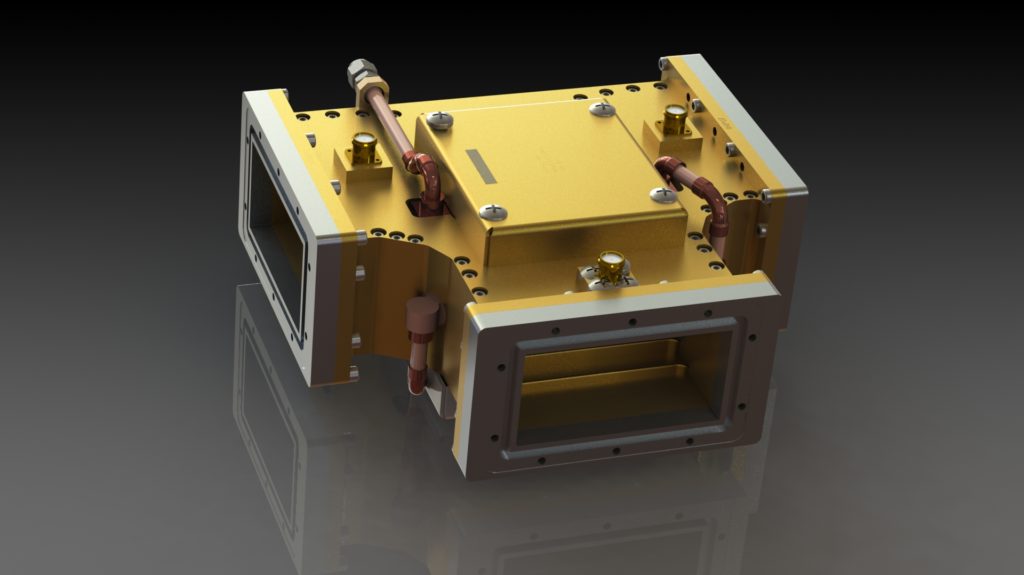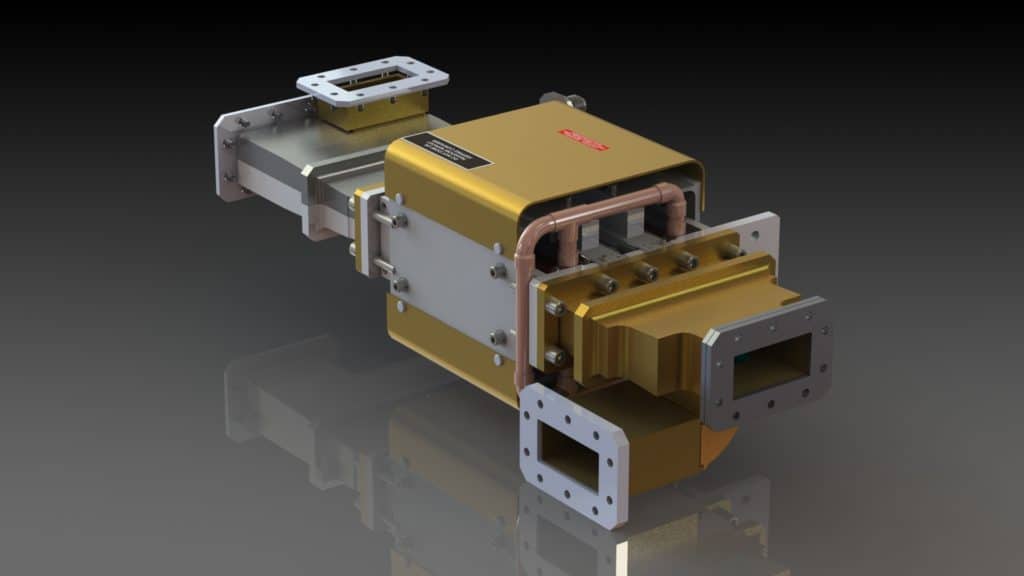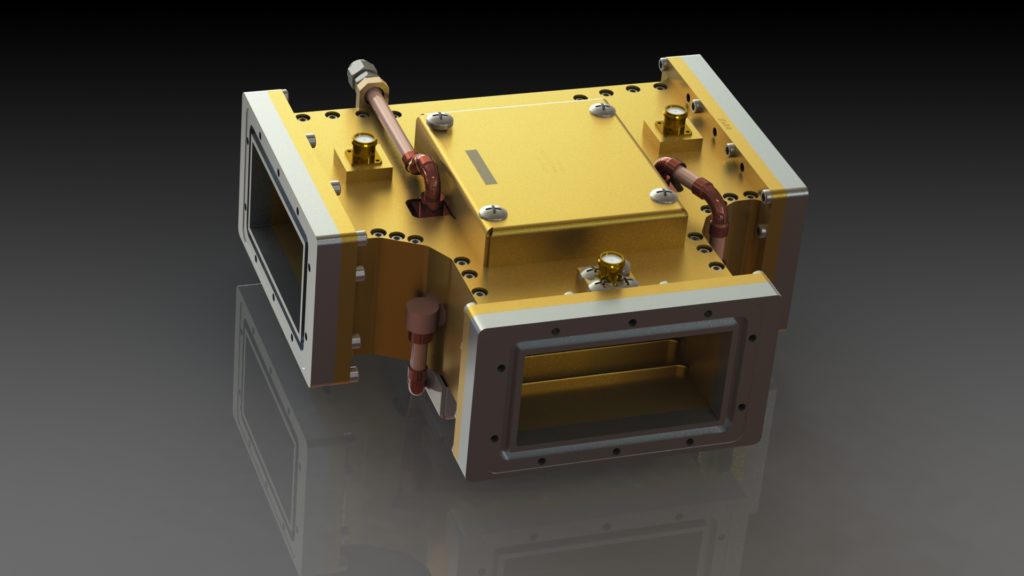In this blog post, we discuss the performance advantages and difference between types of circulators in SCRF accelerator applications. Here, we note two styles manufactured by FMT: the 3-Port Junction and 4-Port Differential Phase Shift.
Introduction
Performance of the waveguide 3-port junction, and 4-port differential phase shift circulators in SCRF Accelerator applications.
The use of high power ferrite devices is critical to the operation of accelerator systems to protect the HPA systems from reflected power. Also, to maintain an appropriate load condition to the HPA to ensure efficient and stable operation.
There are two choices of device which can be employed for this purpose. The choices are the 3-port junction circulator or the 4-port differential phase shift circulator. These devices differ considerably in their mode of operation and present differing properties to the accelerator design engineer.
Circulators in SCRF Accelerator vs. Traditional Accelerators
Firstly, it is important to recognize traditional accelerators and super-conducting accelerators place different requirements on circulators. In a NCRF (Normally Conducting RF Cavity) the resonant cavities are manufactured from high purity copper. Although this material is a very good conductor, at RF frequencies all metals exhibit a finite conductivity. A large portion of the applied RF energy is lost as heat to the walls of the cavity. Thus, in operation a reasonably low level of RF energy is reflected from the cavity back to the protection circulator.
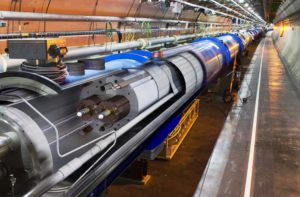
SCRF Accelerators
In an SCRF (Super-conducting RF Cavity) the materials used are required to be operated at very low temperature, typically around 4 Kelvin. This is achieved by the use of large volumes of liquid Helium in complex cooling structures, the complete assemblies are usually termed cryomodules. Super conducting materials still exhibit a finite conductivity, but the levels are 5-6 orders of magnitude lower than that of NCRF systems. The dissipated power in the cavity walls is much reduced. A large portion of the applied RF energy is constantly reflected by the cavity during operation, the level of which can approach a full reflection in certain situations. This puts a much larger stress on the performance of the circulator employed in these systems.
3-Port Circulators in SCRF Applications
The 3-port junction circulator is a symmetric structure. In this structure, suitable sized ferrite disks are placed at the intersection of three waveguides. A magnetic biasing field is applied to these ferrite disks by means of permanent magnets external to the junction. The ferrite material choice and dimensions are critical to achieve the desired operation. A standing wave pattern is setup within the ferrite disks where the applied bias field rotates the field pattern. This effectively decouples the third port and provides a transmission path from port 1 to port 2 with little loss.
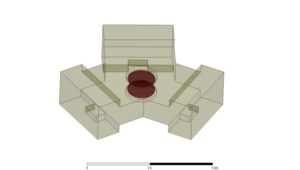
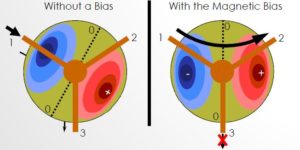
Junction Circulators
The junction circulator depends on maintaining symmetry to give optimum performance. The paper by J Helszjan showed that with the varying phase of a short circuit on the output port of the junction can exhibit a maximum of three times the nominal insertion loss. The increased loss causes increased heating of the ferrite material. Hence, reducing its saturation magnetization and thus pushing its operating frequency up in frequency.
This can be compensated for by adjusting the bias field. However, due to the speed required and thermal constant of the device tuning compensation is typically inadequate. The maximum physical diameter of the ferrite used in a 3-port circulator is directly driven by the frequency of use. More specifically, the ferrite is limited to a size in which the dominant mode can propagate, and higher order modes are suppressed. Thus, as power handling is limited to the heat that can be removed from the ferrite material to maintain correct operation this property of the 3- port junction places a limit on the power handling capabilities.
4-Port Circulators in SCRF Applications
Unlike the 3-port junction circulator, the 4-port differential circulator does not rely on the standing wave pattern setup in a ferrite resonator to create a transmission path. Instead, it relies on the non-reciprocal phase characteristic of magnetized ferrite placed at the point of circular polarization in a waveguide, where a different propagation constant is presented to an RF signal depending on the direction in which it passes through the ferrite material.
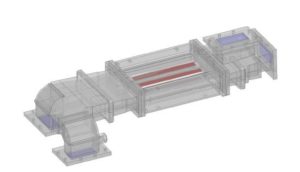
When the differential phase of the center section is set to be 90° the addition of a magic tee and short slot hybrid allows the creation of a circulator.
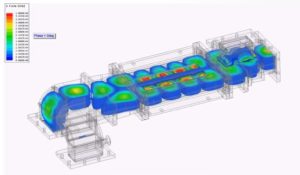
As the operation of the 4-port circulator is only reliant on achieving the correct differential phase shift and this is dependent on the total volume of ferrite required, it is at the designers discretion as to how this is achieved. For instance, a longer center section with thinner ferrite material may be utilized. This gives increased surface area to dissipate absorbed power, this is not a possibility with the junction circulator. The 4-port circulator does not therefore suffer the dimensional limitations of the 3-port circulator related to maximum ferrite volume for a given frequency. There are also techniques pioneered by FMT with distributed center section structures. This helps to achieve both very high peak and average power handling.
Conclusion
SCRF cavities place additional performance requirements on ferrite devices. The need to manage instantaneous changes in applied power levels within an operating environment where almost all power is reflected puts unusually high levels of strain on the circulator. The 3-port junction circulator approach can be employed in these situations. However, it must be aided by exotic compensation (tuning) networks. These are expensive and suffer from thermal “lag”. The use of a 4-port circulator is preferable. This is due to its comparative invulnerability to the constant high reflected power levels present in an SCRF installation. Also, for its ability to manage these reflections without the need for external compensation.
